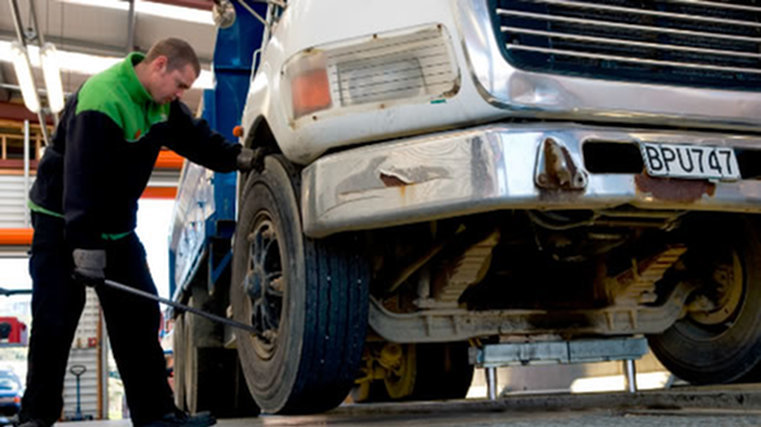NZTA unveils COF regime
Posted on 19 December, 2013

The NZTA has released its final service delivery regulatory model for the new certificate of fitness (COF) regime as part of the Vehicle Licensing Reform (VLR) after a period of consultation.
Essentially, the package is keeping the default six-monthly inspection frequency, but allowing the NZTA to vary inspection frequency from three to 12 months depending on an operator’s safety performance.
It also allows owners and operators to have greater choice about where and from whom they get their vehicles inspected. This will include the flexibility to bundle service and inspection together, with changes coming into effect on July 1, 2014.
The NZTA says key features of the proposed COF inspection service delivery regulatory model are i): it will enable a wider range of organisations to inspect and repair; ii) inspectors will be able to repair and inspect, and occupational regulation will be improved; iii) it will allow more inspection sites and remove requirements unrelated to inspection standards; iv) in the future, the NZTA will consider removing approval requirements.
Regulatory settings will enable the competitive provision of services to ensure safety outcomes are maintained or improved while optimising the balance between “customer responsiveness” and “regulatory risks and costs”.
Appointing inspecting organisations
The NZTA
will consider applications from organisations with financial and professional interests in modifying or repairing vehicles. It will not restrict inspecting organisations from being involved in repairs. They will be banned from inspecting vehicles they have financial interests.
The agency will give no weight to the number of organisations offering services in a geographical area when considering applications. It will require organisations to show they have effective, auditable quality assurance systems.
The NZTA will maintain other appointment requirements. It will make no changes to COF A and COF B classifications when considering applications.
The intent is to preclude operators – including companies that own and lease out vehicles – from inspecting their own vehicles. The NZTA will define “financial interest” and how it will apply this when considering applications.
This is intended to mitigate risks arising from the conflict of interest an owner would have in inspecting their own vehicle and risks of under-servicing that arise from this.
While it prevents vehicle operators inspecting their own vehicles – unless the NZTA establishes an accreditation scheme following its trial of the concept – it wouldn’t necessarily prevent an operator providing an inspection site or full service for other vehicles.
An organisation approved to deliver COF A that wanted to inspect a particular vehicle type covered by COF B would need to meet approval requirements for COF B before undertaking those inspections.
Approval of inspection sites
Inspecting organisations will need to provide services from NZTA-approved sites, at least during the transition phase of the new system.
It will enable organisations to deliver services from more sites, including sites provided by, for example, vehicle service and repair organisations and vehicle operators.
Where an inspecting organisation has approval to provide services at an operator’s facility, there’s no requirement for the organisation to provide services to other vehicles from that site.
Applications to undertake inspections from sites will not be affected by existing arrangements in relevant geographical areas. The NZTA anticipates enabling only one organisation to operate from a site, unless there are exceptional circumstances relating to customer access and coverage in rural or low-volume areas.
The NZTA will remove prescriptive site requirements that have no bearing on the process’ integrity, but increase the cost of developing new sites or limit the eligibility of existing facilities to be approved.
Key elements to be reviewed include, but aren’t limited to, dedicated lanes, turning circles, inspection area lengths, door heights and site branding.
In the medium term, the agency will consider removing the requirement for site approval. It would put the onus on organisations and inspectors to ensure tests were undertaken in an environment meeting requirements.
Occupational regulation of inspectors
The NZTA will continue to appoint inspectors. It will require applicants to hold a qualification as an automotive technician and have three years’ relevant experience or have a longer period of relevant work experience, have comprehensive knowledge of the VIRM: In-service certification, large passenger service vehicles and their requirements and common vehicles, and meet “fit and proper person” requirements.
The NZTA will not consider applicants’ involvement in the service and repair of vehicles to be a conflict of interest that precludes them. It will not place any restrictions on an approved inspector’s role in terms of undertaking vehicle service, repair and inspection activities as a condition of appointment. Organisations will be able to determine what roles staff perform provided they undertake COFs to specified standards.
A code of conduct will provide an ethical and behavioural framework for inspectors. This will outline standards of integrity and conduct for inspection services.
The NZTA’s assessment tools will be updated to encompass technical and non-technical competencies. Professional practice requirements will be extended beyond one inspection per vehicle class in a 12-month period
There will be a three-year term of appointment, renewable subject to auditing and professional practice and development requirements being met, while NZTA sanctions for breaches of standards and processes will be reviewed.
Some requirements – such as the code of conduct, an update to the NZTA’s competency assessment process and revisions to professional practice requirements – should be ready to introduce with other changes in 2014. Others, such as ongoing professional development requirements, may take longer to finalise.
If this is the case, the NZTA will communicate the nature of changes to occupational regulatory settings and anticipated timeframes.
The agency will work with the Motor Industry Training Organisation (MITO) and stakeholders to confirm national competency standards for inspectors that can be included as a strand or strands in national qualifications and training programmes.
While the completion of a national qualification wouldn’t be a requirement for existing or new inspectors appointed by the NZTA in the market’s early transition phase, it will provide a valid vocational training pathway for the next generation of inspectors and may also provide ongoing professional development for existing inspectors.
The intent is to reinforce inspection system quality assurance, enable nationally consistent competency development and the establishment of appropriate training programmes, and recognise vehicle inspection as a career path opportunity for automotive technicians.
The NZTA will also engage with the inspection industry to assess the costs and benefits of a partnership within which it would continue to establish occupational regulatory requirements for inspectors in consultation with industry, but enable those requirements to be administered through a professional association.
This approach to administering occupational regulation doesn’t need to be in place prior to enabling the proposed regulatory changes to the COF service delivery system, and it could be further developed and progressed during transition phase.
The COF business process
The NZTA will require the distinct steps of COF inspection, re-inspection and certification to be maintained by service providers, as occurs in the warrant of fitness delivery model, as a quality-assurance check.
For each COF, the inspecting organisation, vehicle inspector and site identification must be recorded and reported to the NZTA. These requirements will be reflected in the VIRM and each inspecting organisation’s notice of appointment.
The agency will develop its audit system to encompass quality assurance systems, inspection processes and technical requirements. It will also target audits to risk, periodically audits all inspectors and undertake more targeted output inspections of vehicles by transport officers through more unannounced and targeted re-inspections. Quality assurance systems of large providers will be audited.
The NZTA will establish an effective COF service delivery monitoring and evaluation system that enables it to monitor the changes in service provision and their implications for vehicle operators, assess the performance of inspection organisations and inspectors, and respond operationally to mitigate any emerging risks.
This will also assess the overall performance of the COF system and many necessary adjustments to regulatory settings to mitigate risks and optimise system performance.
This will require the NZTA to identify the information it needs to monitor and evaluate the performance of the service delivery system and ensure any information required from inspecting organisations is included within notices of appointment.
It will also establish arrangements for monitoring changes in service outcomes, service provision, coverage and price, and implement a cost-effective process and outcome evaluation strategy that takes account of benefits and risks in the COF cost-benefit analysis.






